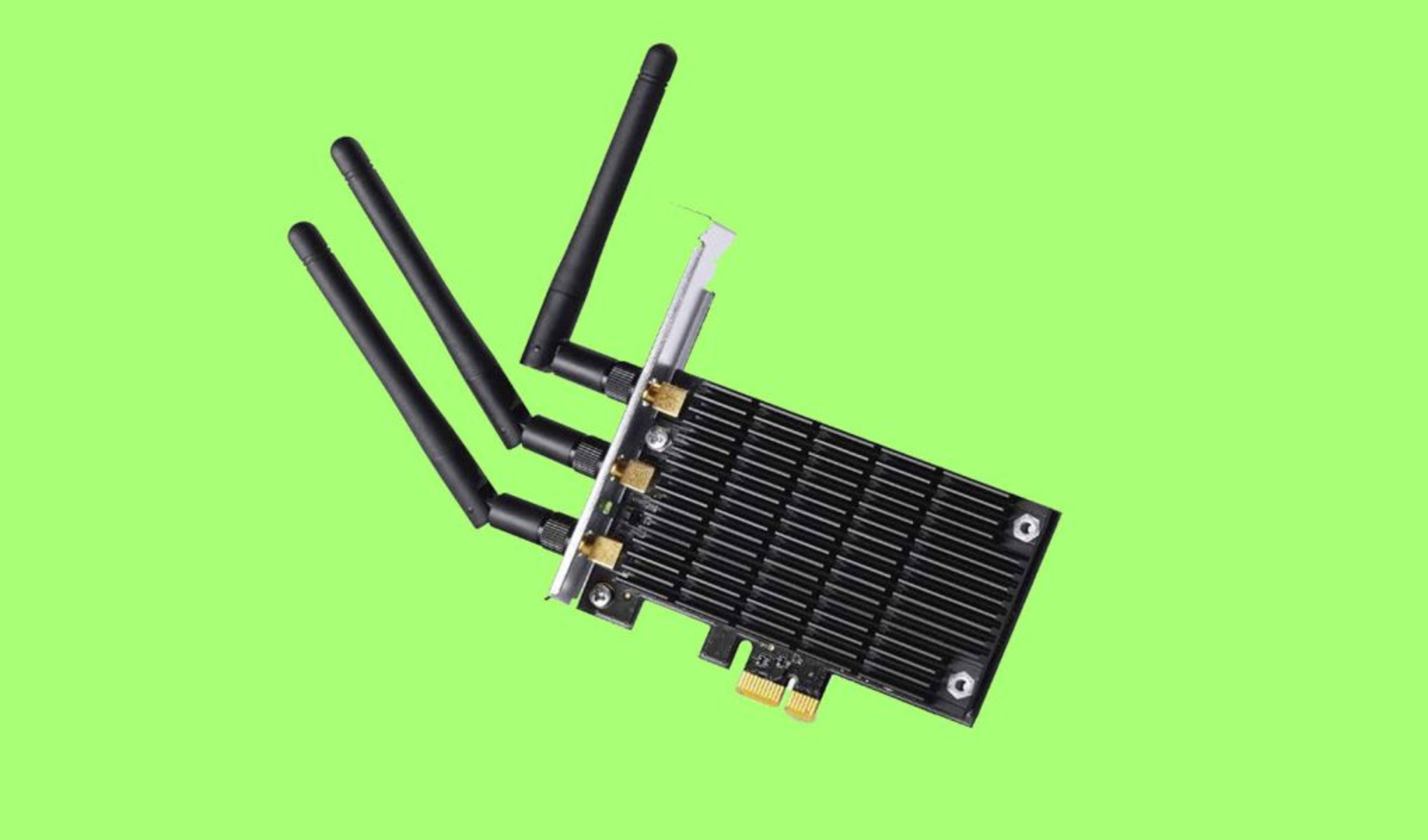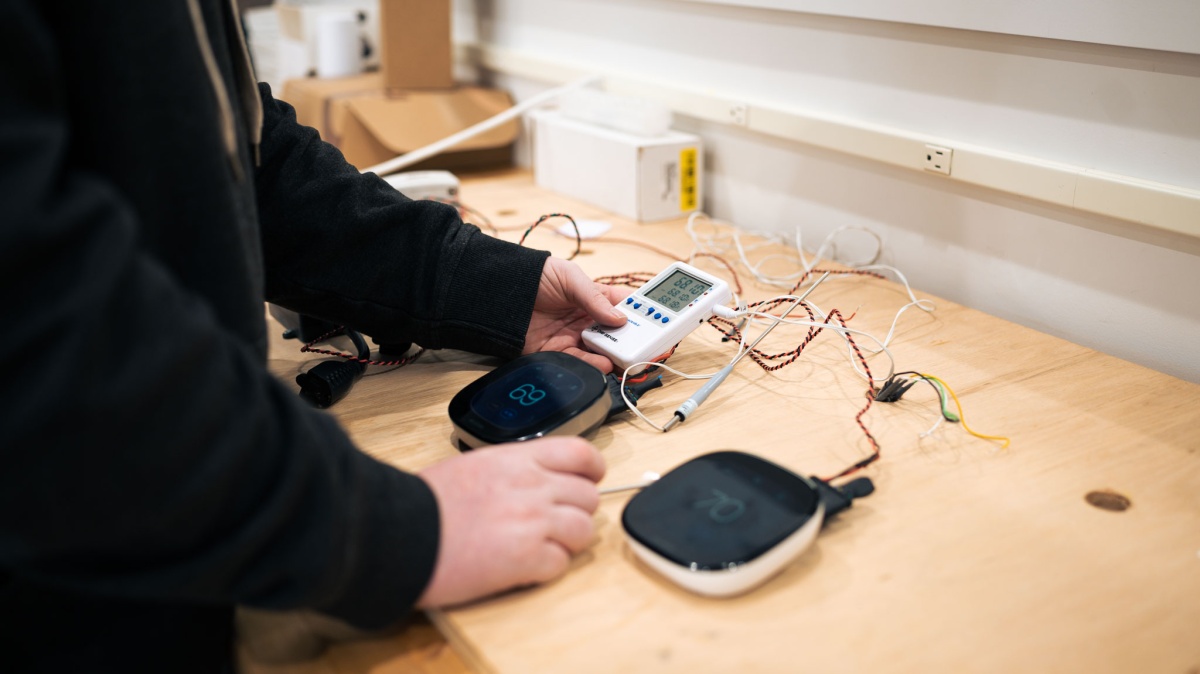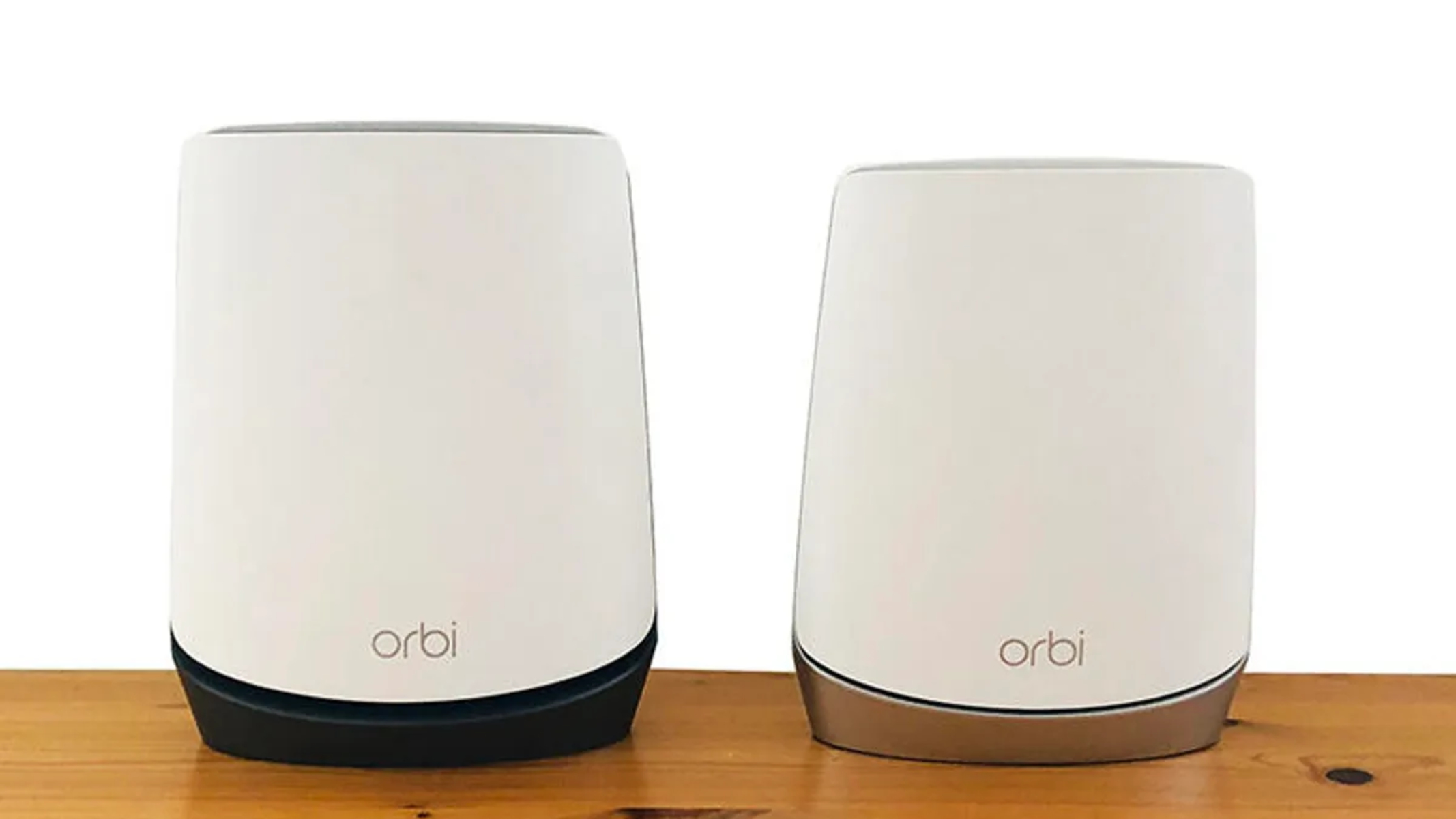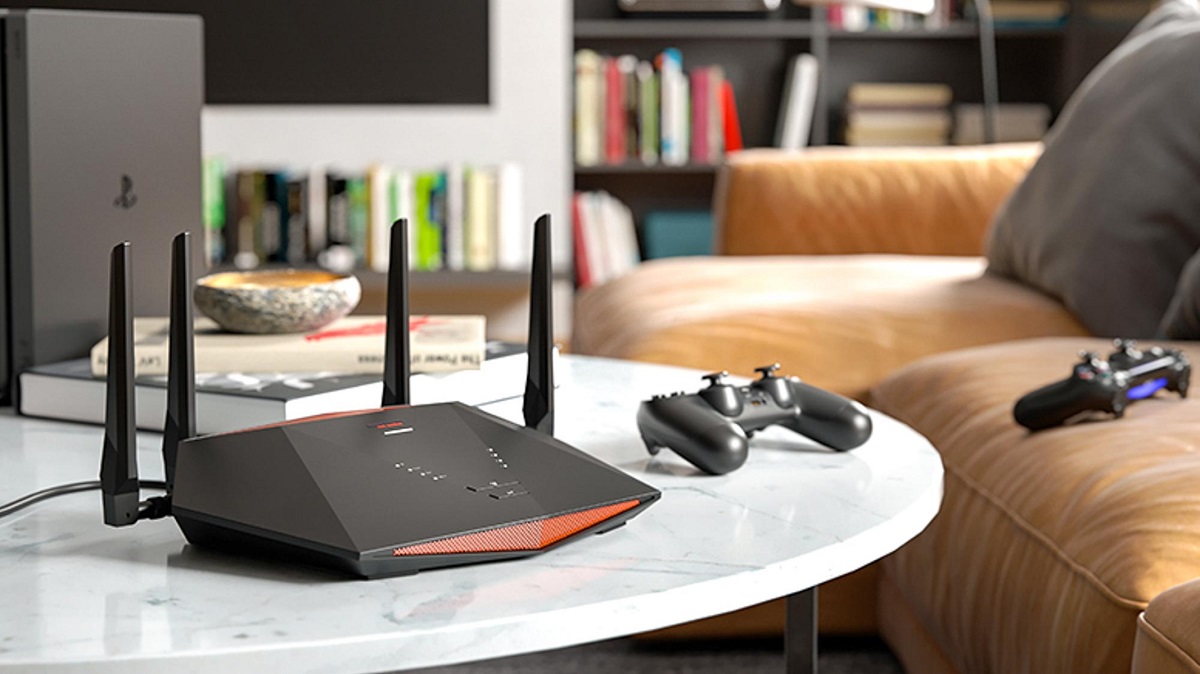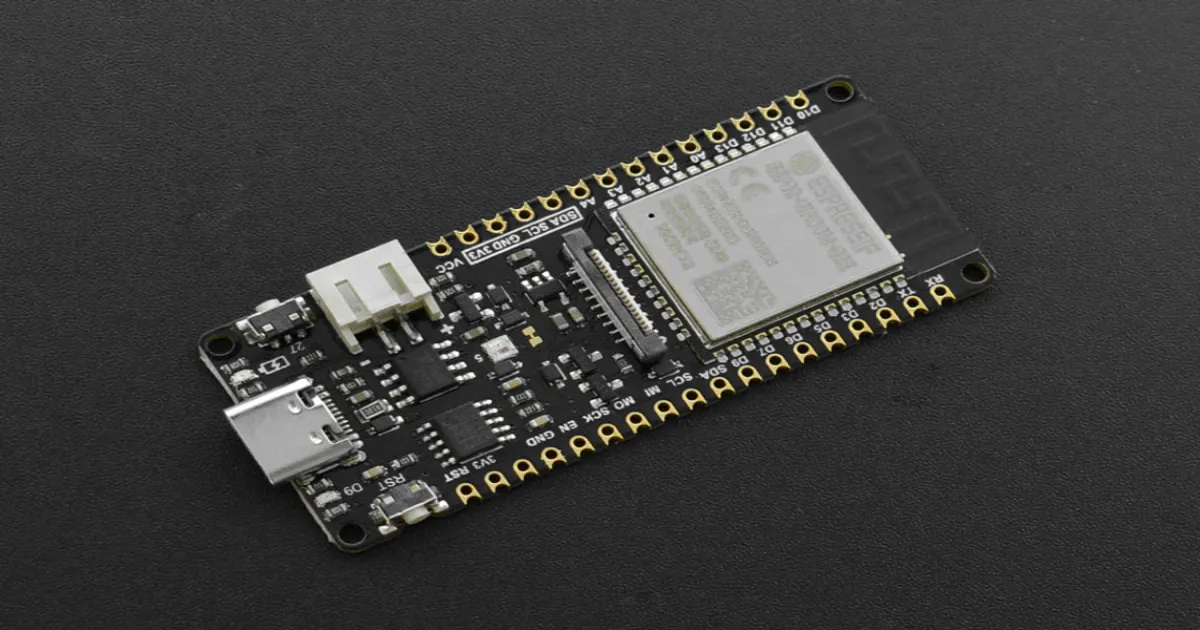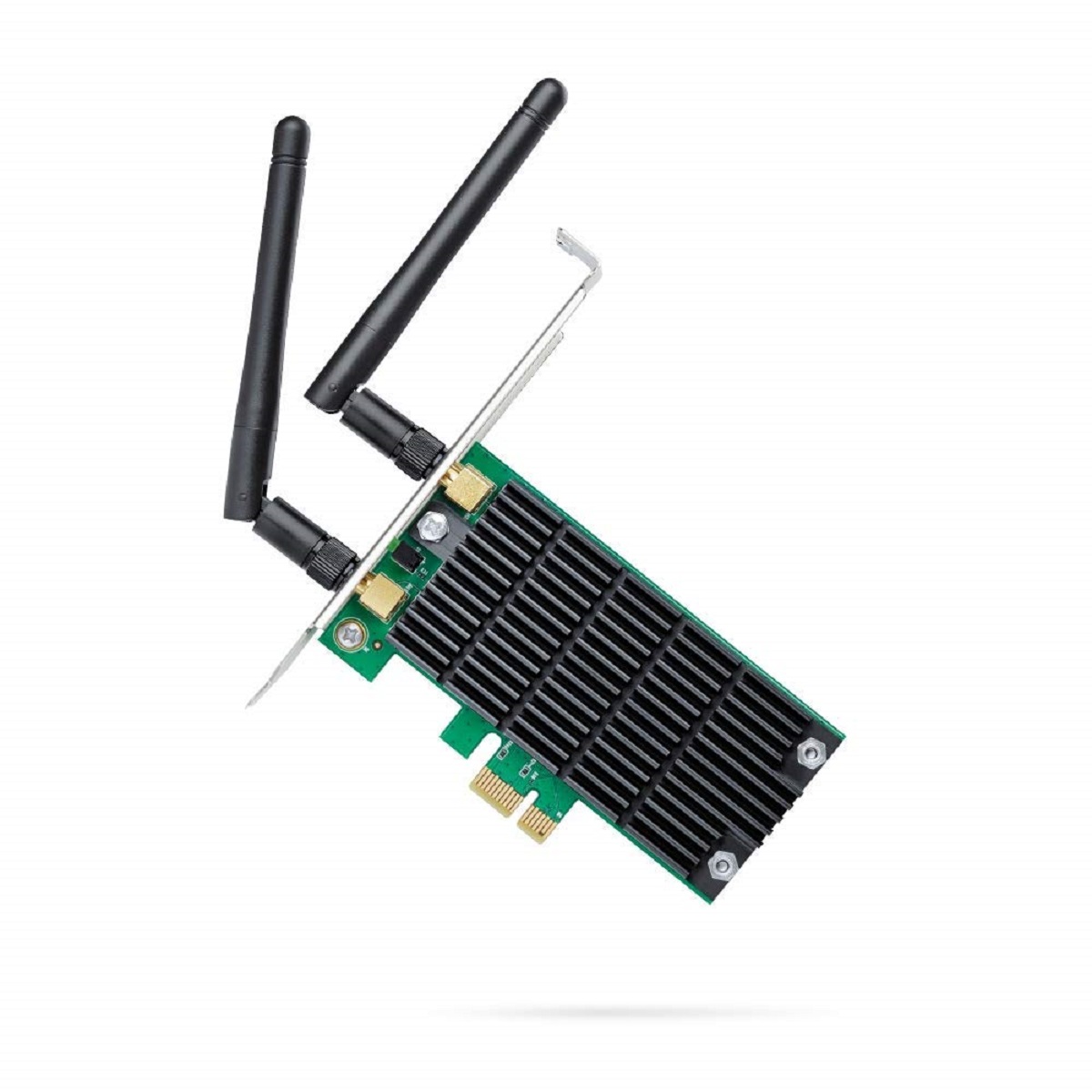Introduction
Welcome to the era of faster and more reliable internet connections with WiFi 6. In today’s fast-paced world, where streaming, gaming, and multiple connected devices have become the norm, having a robust and efficient wireless network is essential. WiFi 6, also known as 802.11ax, is the latest generation of WiFi technology that promises significant improvements in speed, capacity, and performance.
In this article, we will explore the features and benefits of WiFi 6 and how it can revolutionize our internet experiences. Whether you are a casual internet user, a business professional, or a tech enthusiast, understanding the advancements of WiFi 6 can help you stay ahead in a connected world.
WiFi 6 builds upon the foundation laid by its predecessors, offering a multitude of advantages that address the challenges of today’s ever-growing demand for wireless connectivity. From faster speeds to better performance in crowded areas, WiFi 6 is designed to deliver an enhanced experience for users across various devices and applications.
So, let’s dive into the world of WiFi 6 and explore how it can transform the way we connect, communicate, and consume content.
What is WiFi 6?
WiFi 6, also known as 802.11ax, is the latest iteration of WiFi technology, designed to address the ever-increasing demands for faster and more reliable wireless connectivity. It is the successor to WiFi 5 (802.11ac) and brings several significant enhancements that can greatly improve the overall wireless experience.
One of the key features of WiFi 6 is its ability to support higher data rates compared to previous WiFi standards. This means faster download and upload speeds, allowing for smoother streaming, quicker file transfers, and lag-free online gaming. With WiFi 6, you can say goodbye to frustrating buffering and enjoy seamless online activities.
Another major improvement with WiFi 6 is its increased capacity. It utilizes advanced technologies like Orthogonal Frequency Division Multiple Access (OFDMA) and Multi-User Multiple Input Multiple Output (MU-MIMO) to efficiently handle multiple devices simultaneously. This is particularly beneficial in environments with numerous IoT devices, as WiFi 6 can communicate with multiple devices at once, improving the overall network performance.
WiFi 6 also offers lower latency, which is especially crucial for real-time applications such as video conferencing, online gaming, and virtual reality. By reducing the delay between devices and the network, WiFi 6 ensures a more responsive and immersive user experience.
In addition to speed, capacity, and latency improvements, WiFi 6 also introduces Target Wake Time (TWT) technology. TWT enables supported devices, such as smartphones and IoT devices, to optimize their power consumption, resulting in improved battery life. This is a significant advantage for devices that rely on battery power for extended periods.
Furthermore, WiFi 6 is backward compatible with previous WiFi standards. This means that even if you have older devices that do not support WiFi 6, they can still connect and benefit from the network, albeit at their respective supported speeds.
In summary, WiFi 6 offers faster speeds, increased capacity, lower latency, improved battery life, and seamless compatibility with older devices. With these advancements, WiFi 6 is set to revolutionize the way we connect and interact with wireless networks, providing a more efficient and enjoyable online experience for users across the globe.
Improved Speed and Capacity
One of the most significant advantages of WiFi 6 is the improved speed and capacity it brings to wireless networks. With WiFi 6, users can experience faster download and upload speeds, enabling them to stream high-definition videos, play online games, and download large files in a fraction of the time compared to previous WiFi standards.
WiFi 6 achieves faster speeds through the implementation of various technologies. For example, it utilizes wider channels to increase the data transmission rate, allowing for faster data transfer. Additionally, WiFi 6 employs Orthogonal Frequency Division Multiple Access (OFDMA) to divide each channel into smaller sub-channels, enabling multiple devices to transmit data simultaneously without causing congestion.
Another aspect that contributes to the improved speed and capacity of WiFi 6 is Multi-User Multiple Input Multiple Output (MU-MIMO) technology. In previous WiFi versions, MU-MIMO was only available for downstream communication, meaning the router could communicate with multiple devices simultaneously, but the devices could only communicate with the router one at a time. However, WiFi 6 introduces the concept of uplink MU-MIMO, allowing devices to transmit data simultaneously to the router, further enhancing the network’s speed and capacity.
Moreover, WiFi 6 offers a higher maximum data rate per user compared to previous WiFi standards. This means that even in crowded environments with numerous devices competing for bandwidth, WiFi 6 can maintain fast and reliable connections for each device, ensuring smooth and uninterrupted internet usage for all users.
Overall, the improved speed and capacity of WiFi 6 pave the way for more seamless and efficient online activities. Whether you are streaming high-quality videos, engaging in online gaming, or conducting important video conferences, WiFi 6 can handle the demands of today’s data-intensive applications and provide an enhanced user experience.
Enhanced Performance in Crowded Areas
One of the challenges with previous WiFi standards was the performance degradation in crowded areas with multiple devices competing for limited bandwidth. However, WiFi 6 introduces several features that address this issue and ensure a consistent and reliable connection, even in dense and congested environments.
One of the key technologies that enable enhanced performance in crowded areas is Orthogonal Frequency Division Multiple Access (OFDMA). With OFDMA, the WiFi channel is divided into smaller sub-channels, allowing multiple devices to transmit data simultaneously. This means that even in settings with high device density, WiFi 6 can efficiently allocate resources to each connected device, reducing congestion and improving overall network performance.
Additionally, WiFi 6 uses improved Multi-User Multiple Input Multiple Output (MU-MIMO) technology to better handle crowded environments. In earlier versions of WiFi, MU-MIMO was limited to downstream communication, meaning the router could communicate with multiple devices at once, but the devices could only communicate with the router one at a time. However, WiFi 6 introduces uplink MU-MIMO, enabling devices to transmit data simultaneously to the router, further reducing congestion and improving efficiency.
Another feature that enhances performance in crowded areas is the advanced beamforming technology utilized by WiFi 6. Beamforming allows the router to focus the WiFi signal directly at the connected devices, rather than broadcasting it in all directions. This targeted signal transmission helps to reduce interference and improve signal strength, resulting in better performance and connectivity for devices in crowded areas.
With these advancements, WiFi 6 can provide a significantly improved wireless experience in environments such as office buildings, shopping malls, and apartment complexes, where numerous devices are simultaneously accessing the network. Users can enjoy faster speeds, reduced latency, and more reliable connections, even in crowded areas.
Overall, WiFi 6’s enhanced performance in crowded areas ensures that connectivity remains strong and stable, regardless of the number of devices connected or the level of network congestion. This is especially beneficial in today’s increasingly connected world, where multiple devices are constantly vying for a reliable internet connection, ensuring a seamless user experience.
Lower Latency for Real-Time Applications
WiFi 6 brings significant improvements in latency, making it an ideal choice for real-time applications that require instant responsiveness and minimal delay. Whether you’re engaging in online gaming, video conferencing, or using virtual reality applications, WiFi 6 ensures a seamless and immersive experience without frustrating lag.
One of the key technologies that contribute to lower latency in WiFi 6 is Orthogonal Frequency Division Multiple Access (OFDMA). This technology allows for more efficient allocation of channels, reducing the time it takes for devices to transmit and receive data. With lower latency, commands and data can be transmitted swiftly, resulting in a more responsive connection for real-time applications.
Additionally, WiFi 6 utilizes features like Target Wake Time (TWT) to optimize power consumption for devices. TWT allows devices to schedule specific times for transmitting and receiving data, effectively reducing the time it takes for the device to wake up and establish a connection. This feature is especially beneficial for battery-powered devices, such as smartphones or IoT devices, as it minimizes the energy consumed during idle periods and ensures quicker response times.
Furthermore, the improved Multi-User Multiple Input Multiple Output (MU-MIMO) technology in WiFi 6 contributes to lower latency. With MU-MIMO, multiple devices can transmit data simultaneously, reducing the waiting time for devices to access the network. This is particularly advantageous for real-time applications that require prompt data transfer and low latency, ensuring a smooth and uninterrupted user experience.
With lower latency, WiFi 6 greatly enhances the performance of real-time applications. Online gamers can enjoy quicker response times, reducing the delay between their actions and the game’s reaction. Video conference participants can engage in seamless and natural conversations without the disruptive lag. Virtual reality enthusiasts can immerse themselves in lifelike experiences with minimal latency, enhancing the overall sense of presence and realism.
In summary, WiFi 6’s lower latency capabilities enable real-time applications to operate more efficiently, allowing for instant and seamless interactions. Whether you’re gaming, video conferencing, or experiencing virtual reality, WiFi 6 ensures that your experience is smooth, responsive, and devoid of frustrating delays.
Improved Battery Life for Connected Devices
One of the notable benefits of WiFi 6 is its ability to improve the battery life of connected devices, especially those that rely on wireless connectivity for extended periods. With WiFi 6, smartphones, tablets, and IoT devices can enjoy longer battery life, enhancing their usability and reducing the need for frequent charging.
WiFi 6 achieves improved battery life through the implementation of Target Wake Time (TWT) technology. TWT allows devices to schedule specific times for transmitting and receiving data, effectively reducing the time spent in an active state and conserving power during idle periods. This significantly reduces the energy consumption of connected devices, leading to longer battery life.
Prior to WiFi 6, devices would constantly check for available network activity, consuming power even when there was no data to transmit or receive. With TWT, devices can efficiently manage their power usage and synchronize their activities with the access point, reducing unnecessary energy consumption. This is particularly beneficial for IoT devices that are deployed in remote or hard-to-reach areas, where frequent battery replacements or recharging can be impractical or inconvenient.
Moreover, WiFi 6 introduces a feature called Trigger Frame (TF) that further optimizes power consumption. TF allows devices to delay their transmissions and conserve power until a specific frame is received from the access point or another device. By coordinating transmission timings, devices can minimize their active periods, resulting in improved battery efficiency.
By extending battery life, WiFi 6 enhances the usability and convenience of connected devices in various scenarios. Mobile users can have extended periods of uninterrupted productivity or entertainment without the need for frequent charging. IoT devices, such as sensors or smart home devices, can operate continuously for extended durations, without the need for frequent battery replacements or recharging.
In summary, WiFi 6’s improved battery life capabilities through technologies like Target Wake Time (TWT) and Trigger Frame (TF) contribute to the longevity and usability of connected devices. Whether it’s your smartphone, tablet, or IoT gadget, WiFi 6 enables longer battery life, reducing interruptions and enhancing the overall user experience.
Backward Compatibility with Older Devices
One of the advantages of WiFi 6 is its backward compatibility with older WiFi devices. This means that even if you have devices that support previous WiFi standards, such as WiFi 5 (802.11ac) or WiFi 4 (802.11n), they can still connect and benefit from the WiFi 6 network.
WiFi 6 achieves backward compatibility through the use of legacy support. When a WiFi 6 router or access point encounters a device that only supports an older WiFi standard, it can switch to that mode to establish a connection. While the device will not be able to take advantage of the speed and performance benefits of WiFi 6, it can still benefit from the stability and reach of the WiFi 6 network.
This backward compatibility ensures that you don’t need to replace all of your existing WiFi devices to enjoy the benefits of WiFi 6. If you have older devices that still meet your needs but don’t support WiFi 6, you can still use them alongside newer devices without any issues.
However, it’s important to note that when older devices connect to a WiFi 6 network, the overall network performance might be impacted to accommodate the slower device. This is because the WiFi 6 network needs to allocate resources to optimize the connection for the slower device. Nonetheless, the impact on the overall performance is minimal, and the WiFi 6 network can still deliver improved stability and coverage compared to older WiFi standards.
Backward compatibility also provides flexibility when transitioning to WiFi 6. You can gradually upgrade your devices to WiFi 6-compatible ones over time without needing to replace everything at once. This allows for a smoother and more cost-effective transition to the latest WiFi technology.
In summary, WiFi 6’s backward compatibility ensures that older WiFi devices can still connect and benefit from the WiFi 6 network, allowing for a gradual upgrade process. Whether you have a mix of WiFi 6 and older devices, the WiFi 6 network can accommodate them while providing improved stability and coverage compared to older WiFi standards.
Benefits for Smart Homes and Internet of Things (IoT) Devices
WiFi 6 brings a plethora of benefits to smart homes and Internet of Things (IoT) devices, revolutionizing the way we interact with and manage our connected devices.
One of the key advantages of WiFi 6 for smart homes and IoT devices is its improved capacity to handle multiple devices simultaneously. With the increasing number of smart devices in our homes, such as smart thermostats, security cameras, door locks, and voice assistants, the demand for a stable and efficient network has never been higher. WiFi 6’s use of advanced technologies like Orthogonal Frequency Division Multiple Access (OFDMA) and Multi-User Multiple Input Multiple Output (MU-MIMO) allows for better management of multiple IoT devices, ensuring smoother communication and reducing potential network congestion.
Another benefit of WiFi 6 for smart homes and IoT devices is its lower latency. In a smart home ecosystem, where devices need to communicate with one another in real time, low latency is crucial for seamless operation. Whether it’s controlling smart lights, managing home security systems, or receiving notifications from smart appliances, WiFi 6’s lower latency ensures that commands are executed promptly, delivering a more responsive and reliable smart home experience.
WiFi 6’s improved battery life is another boon for IoT devices in smart homes. Many IoT devices run on battery power, and WiFi 6’s implementation of Target Wake Time (TWT) allows them to optimize their power usage by scheduling specific times for transmitting and receiving data. This efficiency extends the battery life of IoT devices, reducing the need for frequent battery replacements or recharging.
Furthermore, the enhanced security features of WiFi 6 provide peace of mind in smart home environments. WiFi 6 utilizes the latest security protocols, such as WPA3, which offers stronger encryption and safeguards against potential vulnerabilities. This ensures that sensitive data transmitted by smart devices is protected and not easily compromised.
Overall, WiFi 6’s benefits for smart homes and IoT devices include improved capacity to handle numerous devices, lower latency for real-time communication, extended battery life, and enhanced security measures. With these advantages, WiFi 6 enables a more seamless and efficient smart home ecosystem, promoting increased automation, convenience, and peace of mind for users.
How to Upgrade to WiFi 6
Upgrading to WiFi 6 is a straightforward process that requires a few key steps to ensure a seamless transition. Here’s how you can upgrade your network to WiFi 6:
- Check device compatibility: Before upgrading to WiFi 6, it’s important to ensure that your devices are compatible with the new standard. WiFi 6 is backward compatible, meaning it can work with older devices, but to take full advantage of the new technology, you’ll need devices that support WiFi 6.
- Upgrade your router or access point: The first step in upgrading to WiFi 6 is to replace your old router or access point with a WiFi 6-compatible one. Look for routers or access points that are specifically labeled as WiFi 6 or 802.11ax. These devices will provide the best performance and compatibility for your WiFi 6 network.
- Consider mesh WiFi systems: If you have a larger home or an area with poor WiFi coverage, consider upgrading to a mesh WiFi system that supports WiFi 6. Mesh WiFi systems use multiple access points placed throughout your home to provide consistent coverage and eliminate dead zones.
- Update your devices: To fully utilize the benefits of WiFi 6, it’s important to update your devices to ones that support the new standard. This includes smartphones, laptops, tablets, and other WiFi-enabled devices. Check with the manufacturers of your devices for WiFi 6 compatibility or consider upgrading your devices if necessary.
- Configure your WiFi 6 network: Once you have the WiFi 6 router or access point installed and your devices updated, you’ll need to configure your network settings. This includes setting up a strong password, choosing the appropriate WiFi channels, and adjusting other network settings based on your specific needs.
- Enjoy the benefits of WiFi 6: With your network upgraded to WiFi 6, you can now enjoy the improved speed, capacity, and performance that this latest WiFi standard brings. From faster download and upload speeds to better performance in crowded areas, WiFi 6 offers a more efficient and seamless wireless experience.
To ensure a smooth transition, it’s recommended to consult the user manuals or support documents provided by the manufacturers of your devices and routers. They may offer specific instructions or troubleshooting steps to help you upgrade to WiFi 6 successfully.
By following these steps and ensuring compatibility between your devices and the WiFi 6 network, you’ll be able to enjoy the benefits of this advanced technology and stay connected in our increasingly wireless world.
Conclusion
WiFi 6, also known as 802.11ax, is a game-changer in the world of wireless connectivity. With its improved speed, capacity, lower latency, extended battery life, and compatibility with older devices, WiFi 6 opens up new possibilities for individuals, businesses, and smart homes.
The faster speeds and increased capacity of WiFi 6 enable seamless streaming, faster downloads, and smoother online gaming experiences. The enhanced performance in crowded areas ensures reliable connections even with numerous devices competing for bandwidth. Lower latency makes real-time applications such as video conferencing and online gaming more responsive and immersive. Improved battery life allows for extended usage of battery-powered devices. And backward compatibility ensures a smooth transition to WiFi 6 without the need to replace all existing devices.
Upgrading to WiFi 6 requires a few simple steps, including checking device compatibility, upgrading the router or access point, updating devices, and configuring the network settings. By following these steps and ensuring compatibility, users can take advantage of the benefits WiFi 6 offers.
Whether you’re a casual internet user, a business professional, or a smart home enthusiast, WiFi 6 delivers a more efficient and enjoyable wireless experience. The advancements in speed, capacity, and performance provided by WiFi 6 pave the way for a future where connectivity is faster, more reliable, and capable of handling the growing demands of our increasingly connected world.
So, embrace the power of WiFi 6 and elevate your wireless experience to new heights. Stay ahead and connected with WiFi 6, the technology that brings faster speeds, enhanced performance, and improved efficiency to your digital world.










